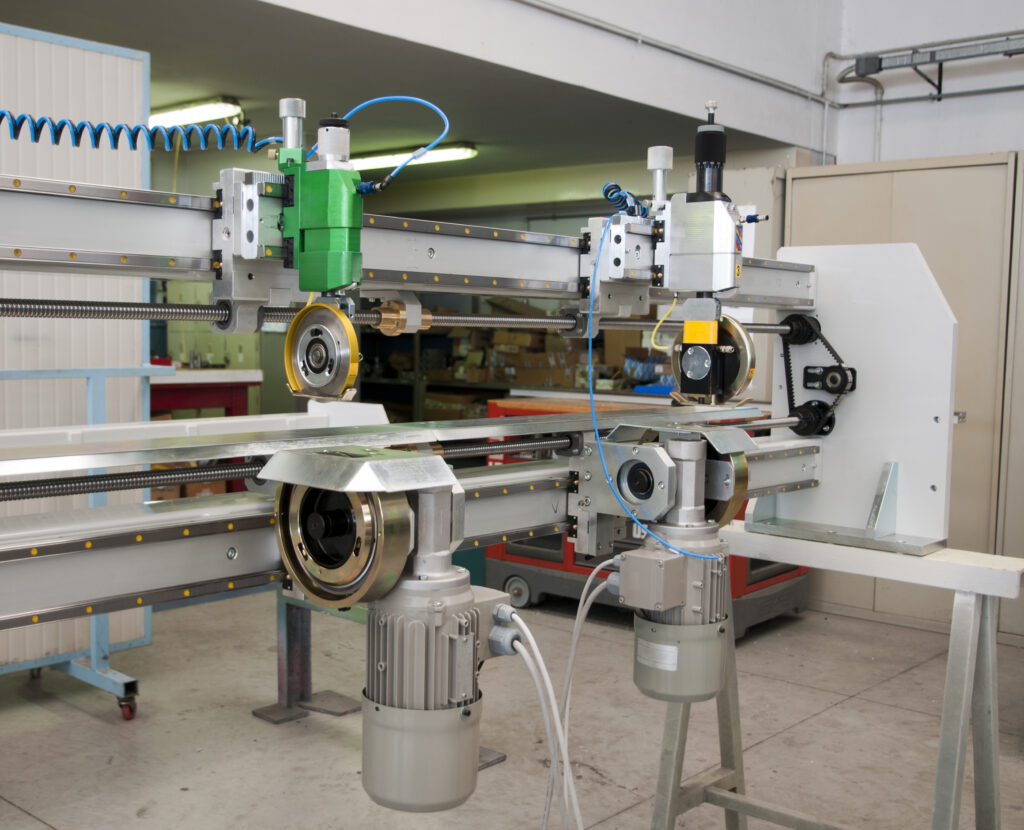Actuators: Creating Movement in Manufacturing
The factory floor in most manufacturing facilities is a very active place. From the front door to the back, there is likely a whirlwind of motion and movement as automated machinery transports, picks, cuts, stamps, assembles, processes, produces and packages products. While it may seem like all of this productivity is controlled with the touch of a button, actuators are the behind-the-scenes stars of the plant floor as they are the devices that bring motion to almost all of the equipment found there.

What is an Actuator?
As the components that convert energy into lifting, ejecting, pressing, clamping and other motions, actuators are used to move or control devices or systems within machinery. Actuators are categorized by the type of motion they produce, with linear actuators providing straight-line motion and rotary actuators offering circular motion, as well as by the form of energy that powers that motion. For instance, hydraulic actuators rely on hydraulic fluid; pneumatic actuators depend on pressurized air; and electric actuators generate motion via electricity.
Actuators can be found everywhere – in industrial machinery, construction and agricultural vehicles, robotics, automotive applications, the aerospace industry, healthcare devices and even in the vibration of cell phones. Below, we’ll focus on common actuator types and the unique advantages they bring to manufacturing industry applications.
Hydraulic Actuators: Advantages and Applications
Hydraulic actuators rely on hydraulic fluid to create and control movement. This type of actuator provides significant force, strength and power and offers reliable operation and long service life. Another advantage is the ease of control – adding fluid will generate force and reducing it will lessen the force. Hydraulic actuators are a great choice when controlling simple movements requiring high forces.
Most commonly used in construction equipment, hydraulic actuators also find use in heavy industrial machinery such as stamping and clamping machines, injection molding equipment and presses where they provide the high force needed to lift or move a heavy load but are not required to change speeds or stop or start on a dime.
Pneumatic Actuators: Advantages and Applications
Pneumatic actuators convert compressed air into mechanical energy to create force. While pneumatic actuators are often chosen based on their initial low cost, they, in fact, offer several distinct advantages. They are capable of high speeds and offer accurate and repeatable motion profiles. The simplicity of design means they are easy to install and can provide very reliable operation with minimal maintenance requirements. Being air-operated is another significant advantage in that they can safely be used in locations where fire or explosions are a risk.
In the manufacturing industry, pneumatic actuators are a frequent choice as most facilities have compressed air systems available which allow them to operate reliably with little maintenance. Pneumatic actuators can be found in industrial machines, cranes and hoists and automated material handling equipment such as conveyors. Pneumatic actuators are also widely used in process control applications where they open and close valves to control the flow of fluids in industries including oil and gas, food and beverage, chemical and pharmaceutical processing because they provide a clean and reliable source of precisely controllable power. This type of actuator can also be found in robotics where they commonly initiate motion in end-of-arm tooling such as grippers. Pneumatic actuators are also commonly found in clamping and stamping applications to operate the “jaws” that hold or mark the object being produced.
Electric Actuators: Advantages and Applications
Electric actuators use electrical currents to energize an electric motor, which creates the force that generates motion and movement. Electric actuators often include feedback devices for tighter control and self diagnostics to assist with maintenance. Although they can be somewhat complex and are often more costly to purchase, electric actuators provide many performance advantages such as extremely precise control, very accurate positioning, excellent response times, high speeds and small sizes. As an added bonus, they can be cleanroom and sanitary application friendly as electric actuators don’t require the use of either hydraulic fluid or compressed air.
Electric actuators are finding a lot of use in robotic applications where they can control and repeat precise movements of robotic arms, grippers or other robot systems used for assembly and other tasks and where there needs to be tight, repeatable control. They may also be found in cutting applications where they raise and lower blades in applications that cannot risk contaminants or leaking fluids, such as carpet and paper manufacturing. For this same reason, electric actuators are also preferred in printing applications. In critical or sanitary fluid control operations, electric actuators may be found in valve and flow control applications.
Actuators certainly keep the manufacturing industry moving, but in order to get the best performance, it’s important to know the advantages of each actuator type as well as the applications where they are best suited. No matter the actuator type or application, any actuator selected for manufacturing industry use must provide precise positioning, start and stop without delay and perform reliably for optimal operation. JHFOSTER engineers are available to help you choose a suitable, reliable actuator for your manufacturing application.
